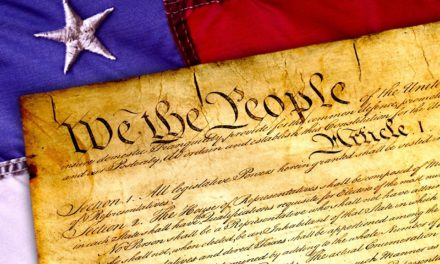(Left to Right) Louis Escareño, San Antonio artists Analy Diego and Ronald Rocha. (Courtesy photo)
BY LOUIS R. ESCAREÑO
It turns out that it was a good thing that the eastern wall of Estela’s Mexican Restaurant was painted over. But it didn’t seem that way at first.
Back in February of 2018 Estela’s, on Martin street in San Antonio, was sold and the new owners began to change the building from an eatery to a funeral parlor. There were three larger-than-life murals inside: Selena Quintanilla, Flaco Jimenez and Henry B. Gonzalez – hardly the appropriate backdrop for somber ceremonies. So the dining room murals were erased to make way for chapels.
At the time there was community outcry and it seemed that the murals were lost forever.
If you ever had a meal at Estela’s you understand the emotional response to the loss. It was more than just a restaurant, Estela’s was a gathering place, a politicos’ hotspot, a place to see and be seen, to touch base and take the city’s political pulse. There were rallies and fundraisers, speeches and organizing, and through the years Henry B.’s furrowed profile presided over it all.
To understand how the shock of the mural’s loss rippled across San Antonio’s Mexican-American community you have to understand the community’s history and the pivotal role that Henry B. played in it. From the start of his political career in the early 1950’s until his death in 2000 there are scant instances in our city’s politics where his leadership and influence weren’t felt. He was a trailblazer, a warrior, a relentless advocate, defender and voice of the voiceless. For San Antonio’s Mexican-American community the mural at Estela’s told myriad stories without saying a word. The loss was understandably profound.
There was an unspoken dread when it happened, a fear that history would be lost without Henry’s pensive gaze to serve as a reminder. The fear was that Henry B.’s influence would slowly erode from the community’s remembrance and be relegated to archives and academic treatises.
There was more at stake than a painting on a wall, because that painting represented the hopes of generations of San Antonian’s who stood with the fiery Congressman when he stood against the most pernicious forms of discrimination at the highest levels of government.
The list of Congressman Henry B. Gonzalez’s accomplishments is too long to record in this space and too nuanced to describe – he lived and fought for civil rights when every step, every defense, every bold initiative carried the seeds of deep change and the dangerous backlash that came with standing up for the most marginalized in America. I don’t say that lightly, because the effect of the work of the 18-term congressman reverberated across the country – he championed educational equity, banking reform, Civil Rights, Voting Rights, and labor rights. He railed against the war in Vietnam, and he famously called for the impeachment of then Attorney General William Barr. And yet he rejected being called a “Latino leader” or any other kind of ethnic leader for that matter, all the while battling segregation and inequality.
He was a mastermind of the housing reform that enabled many working-class Americans to own a home in which to raise their families, and in the 1980s, in what some have called a precursor to the 2007 financial crisis, Gonzales reacted to a savings and loan crisis that put the savings of millions of Americans in peril. He put together a bailout that saved the industry and the U.S. economy.
This is the Legacy that teetered on the edge of being forgotten, that could have been forgotten if not for the work of San Antonio artist Analy Diego who recreated the original mural, done by Ronald Rocha and with the strong support from San Antonio City Councilman Roberto C. Treviño, the Westside Development Corporation and the San Antonio West Chamber of Commerce that Recreation now has a permanent place in the San Antonio Convention Center that bears his name. And it is there that it will continue to tell its story so that Mexican-Americans from San Antonio, from Texas, and from the entire country will come to know, remember and feel pride in one of their own. It’s there that Americans from every corner of the country and people from every part of the world will know who Henry B. was, what he did, and how his proud Community has contributed, defended and worked for our nation.
So, yes, it is a good thing that the mural at Estela’s was painted-over because that act, which felt devastating when it happened, has given us an opportunity to tell the Henry B. story to a wider audience for many years and generations to come.
Henry B. fought for justice and relevance, and it’s fitting that the piece of art that was held in dear regard by so many people in his home community will be the way in which his legacy will be remembered.









